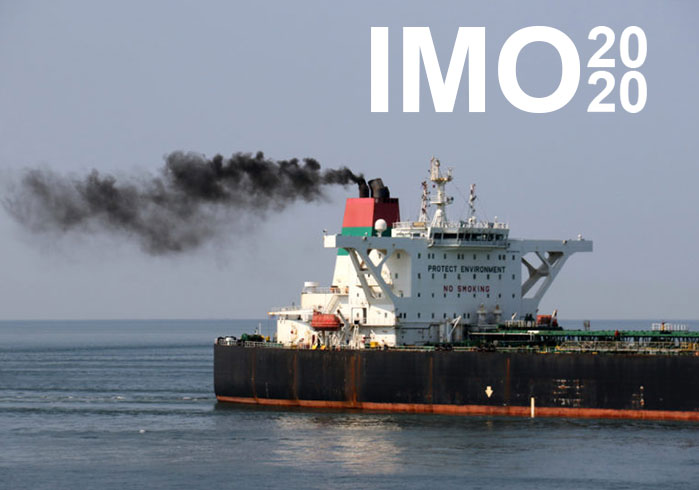All across the industry, one of the hottest topics is the term “IMO regulation” for the coming 2020 year. Of course, this is a term that has made its way across the industry for years, and people don’t need to be avid pursuers of ocean freight news to have exposure to it. But there’s a big difference between recognizing the term as something associated with the industry and knowing what it means. Beyond that, understanding how IMO regulation impacts your supply chain is a completely different concept.
The 2020 IMO is one of the most critical changes to Maritime shipping in recent history, and it will have an impact across multiple industries. As the implementation date draws closer and closer, it’s essential to understand what this new regulation has in store for you and how it will impact you as a shipper.
What is the IMO 2020 Regulation?
IMO is a new set of regulations set forth by the International Maritime Organization. It will go into effect as of January 1st, 2020, and when it does all of the sulfur emissions for maritime vessels will become limited. The current ratio is 3.5% mass by mass or m/m, but in 2020 that amount will drop to 0.5% mass by mass.
The IMO has offered its explanation for how this regulation is to be broken down and has stipulated that the primary type of bunker oil that is used for ships is a very heavy fuel oil that is taken from crude oil distillation derivatives. This crude oil contains a large amount of sulfur which, during the combustion process within the engine increases the amount of emissions.
This bunker oil fuel, otherwise known as heavy fuel oil requires the purification of crude oil by way of heating and subsequently cooling be extracted hydrocarbons such as diesel and gasoline. The residual oil that is left lingering long after this process is complete is referred to as bunker oil. That is what is used to power all of the shipping vessels in the industry. As the fuel is burned, sulfur gets emitted into the atmosphere in the form of a harmful by-product. The problem with the shipping industry is that an individual state does not govern the vast oceans, so it is challenging to oversee the regulation of maritime pollution. Since 1973 an international agreement was put into place to prevent this type of pollution. Over 155 countries have ratified this convention since and are continuing to be tightened.
Certain emission control areas have stricter requirements for shipping emissions where the sulfur limit will not be 0.5% but, 0.1%. Any vessels operating Within These emission control areas have to comply with the lower restrictions on sulfur oxide emissions — currently the Baltic Sea, North Sea, u.s. The Caribbean Sea and the coastal areas along the United States and Canada fall under these emission controls areas.
Compliance Methods for the Regulation
Over four hundred million tons of fuel is currently used to power shipping vessels on an annual basis, and ship owners now have to find alternative fuel methods. There are three accepted methods that can be used to comply with the regulations.
Demand for LSF
Low sulfur fuel like marine gas oil is one of the highest quality fuels that can be found on the market today. It has a very low sulfur concentration, but it is costlier than scrubbers. Major oil producers have created newer and cheaper types of mixtures that comply with the new sulphur requirements. So far, tests suggest that the more modern blends of oil are not 100% stable and the low availability reveals that vessels are unlikely to be equipped with the low sulfur fuel immediately. The switch to a low sulfur fuel will likely be the most popular as soon as the regulations go into effect given the lack of scrubber installations.
Demand for LNG
Liquefied natural gas is one of the most environmentally sound alternatives, and it will reduce sulfur emissions by upwards of 90%. This has been the fuel of choice for four large vessels constructed over the last five years. These vessels can operate in any of the emission control areas without a change to their current fuel; however, not every shipping vessel is equipped to utilize liquefied natural gas which means the availability is limited in terms of scope.
Liquefied natural gas-powered vehicles cost $5,000,000 more to construct compared to oil-fueled vessels which are effectively the same cost of installing scrubbers.
Demand for Scrubbers
Scrubbers are a way of cleaning the exhaust gases. These cleaning systems get fitted to the vessels that carry and burn heavy fuel oil. These systems clean the emissions before being released into the atmosphere, which is done by introducing alkaline water to reduce the sulfur oxide. There are current questions about the sustainability given the fact that water is used in the treatment process and said water is eventually released into the sea. The IMO does not regulate scrubbers, and certain countries have banned them entirely like China. Right now there are orders for more scrubbers in an attempt to comply with the new regulations, but the total number of requests that have been seen by energy consulting firms is still just a fraction of the total number Maritime vessels that are currently at sea. The high cost of installation is a significant deterrent. Installing scrubbers can cost anywhere between $2000000 and 6 million dollars per vessel based on the age of the ship, the size, and the type.





